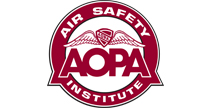Loss of elevator proves deadly on test flight
WPR091A202
 By David Kenny
By David Kenny
Exercising great caution in the first test flights of a newly constructed aircraft is a must. Commercial manufacturers take extensive precautions to limit the risk to their aircraft and test pilots. Resources such as wind-tunnel testing, computer simulation, airframe parachutes, on-site fire and rescue teams, and top-quality protective gear aren’t typically available to individual homebuilders, so they are even more reliant on proceeding one step at a time, cross-checking everything, and taking nothing for granted.
On April 17, 2009, a Glasair Sportsman GS-2 crashed into a residential neighborhood in El Dorado Hills, Calif., killing the solo pilot. No one on the ground was injured. The airplane had received its initial (restricted) airworthiness certificate just three weeks before, and according to the pilot’s wife, the accident occurred during its sixth or seventh hour of flight testing. The pilot built the airplane at the Glasair factory in its “Two Weeks to Taxi” program, completing construction on Feb. 20, and then partially disassembled it for shipment to his home field at Rancho Murieta, where it was reassembled for its airworthiness inspection.
The Sportsman took off a little after noon. Just under an hour into the flight, two other pilots on the frequency heard Mayday calls:
"MAYDAY MAYDAY, I'm going down into the brush.... I've lost elevator control."
"Mayday! Mayday! Mayday! (unintelligible call sign numbers) No elevator no elevator, I'm going down, I'm going down, no elevator, I'm going down, I'm going down in some trees!"
Related Links
Witnesses on the ground saw the airplane descend into trees with the wings level and the engine running. It hit the ground about a hundred yards beyond the first tree strike and eventually came to rest against a stone retaining wall.
Much of the wreckage was consumed by fire, but investigators found that the rod on the forward end of the elevator torque tube had backed out of its bearing. The bearing remained attached to the bell crank, and the jam nut was still on the rod end, but the elevator surface was no longer connected to the control stick. Tension on the jam nuts normally secures the rod in place. The FAA’s Advisory Circular 90-89A: Amateur-Built and Ultralight Flight Testing Handbook, which provides helpful information about all the components that make up a thorough and careful flight-testing regimen, recommends rechecking these (and all other flight-control fittings) after each of the first few test flights. Glasair’s inspection checklist calls for putting a stripe of “witness paint” across the jam nut and bearing to make it easy to see whether the nut has slipped: If the nut moves, it’s clear at a glance that the paint marks no longer align. No such paint was found on the bearings or jam nuts at either end of the torque tube.
Even after elevator control was lost, the pilot might possibly have salvaged the situation, or at least made a forced landing on more favorable terrain. The investigators found that the electric trim motor “functioned normally from stop to stop when power was applied.” Judicious use of trim, with perhaps some power adjustments, could have provided some control over the airplane’s pitch attitude. But the pilot was not only new to the Sportsman, he was fairly new to flying, with a little more than 160 hours in his logbook, and failure of a primary flight control is an emergency rarely addressed in training.
Any builder without test-pilot experience or extensive knowledge of the make and model might consider hiring a professional to do the initial testing. Failing that, the first line of defense is to make early test flights over the most open countryside around. Fewer obstructions improve the chances of walking away if something unexpected happens—which can almost be expected while the aircraft works through its shakedown phase.